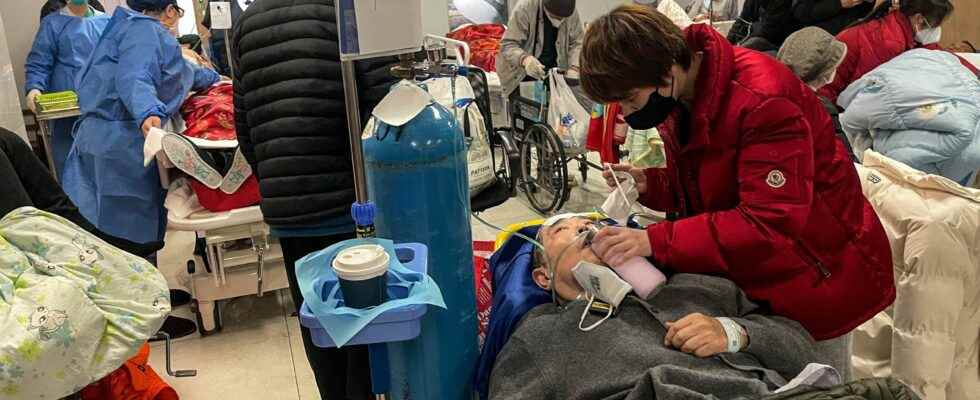After three years of some of the most draconian restrictions in the world, China abruptly lifted most of its health measures against the coronavirus in early December 2022. As a result, the number of patients has increased sharply. Hospitals find themselves overwhelmed with elderly patients and crematoriums appear overwhelmed by the influx of bodies.
This abrupt end to the “zero Covid” policy also has consequences for the number of deaths. China announced this Saturday, January 14, at least 60,000 deaths in hospitals in connection with the Covid-19 pandemic, since the lifting of health restrictions in the country.
“A total of 59,938 (deaths) were recorded between December 8, 2022 and January 12, 2023,” health authority official Jiao Yahui told reporters. This report does not take into account deaths recorded outside medical structures. Among these deaths, 5,503 were caused directly by respiratory failure linked to Covid-19, said this official. On Wednesday January 11, the Chinese health authorities had considered that it was “not necessary” to dwell immediately on the precise number of deaths linked to Covid.
The new Chinese definition of a Covid death
Beijing revised its methodology for accounting for Covid-19 deaths in December. Only people who died directly from respiratory failure linked to the coronavirus are now included in the statistics. This controversial change in methodology means that a large number of deaths are no longer listed as being due to the coronavirus.
The World Health Organization (WHO) last week criticized this new Chinese definition, deeming it “too narrow”. Beijing had in return called on the WHO to adopt an “impartial” position on this disease.
